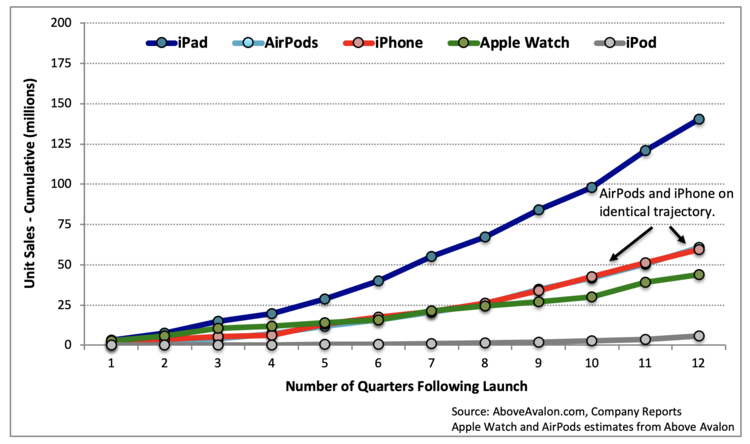Apple just announced they’ll be launching spatial and lossless audio, at no extra cost, to all Apple Music subscribers starting in June. Seemingly in response, Amazon announced that they’ll be folding their lossless quality tier into the standard Amazon Music subscription tier. Lossless quality music is $9.99 now.
Amazon & Apple are not music companies
Neither Amazon nor Apple need to make money with their music businesses. They utilize these aspects for greater ecosystem tie-in and can afford to use music as a loss leader. Not even considering Apple’s iPhone, App Store or MacBook business… Apple’s revenue for their Airpods equals the revenue of Spotify, Twitter, Snap, and Shopify combined (2019).

Another analyst puts the 2019 revenue for Airpods at $7.5 billion, rather than $12 billion. Still enormous. Airpods are becoming a platform. With its iTunes Store it sought to get more people on the iPod, which created a consumer lock-in that extended to the iPhone and the App Store. Steve Jobs‘ deal terms for iTunes also had a profound effect on the economics of music – laying the foundation for many of today’s discussions.

Lossless as a loss leader
Unless Apple and Amazon signed some very unique deals with labels, lossless streaming comes at a higher price than standard quality. That means that for now, Apple and Amazon are deciding to eat the cost in order to tie more people into their ecosystems. Amazon was previously criticized for this in 2011, subsidizing Lady Gaga‘s album sales of Born This Way by discounting it to $0.99:
“The digital retailer used the album as a loss leader to promote their Cloud Drive storage service and paid Gaga’s label full wholesale price for each album sold.”
Apple has been taking aim at Spotify since the launch of Apple Music. That started with rhetoric around how human curation is better than algorithms. More recently it took the form of a letter to artists about Apple Music’s royalty rates. Spotify’s antitrust complaints in the EU about Apple’s App Store practices means Apple faces fines as high as $27 billion. Spotify announced they have a lossless tier coming up later this year. Most people assumed this would come at an extra cost. Apple’s decision to use their $200B war chest to eat the cost of lossless quality audio is very much a move against Spotify.
Growing the pie – undermined?
Spotify had the courage to move first and start increasing prices of its existing tiers. Streaming subscription prices have long been stuck at the same price, losing 26% of value due to inflation. The market has become mature enough to raise prices and that’s something that needs to be normalized in a way similar to Netflix’ price hikes.

Apple & Amazon’s strategy puts that at risk. Two questions to ponder: is music currently sustainable with so many companies relying on revenues from streaming services that are making a loss and are subsidized by tech giants or investors? Can this digital music landscape be sustainable without asking consumers for a fairer price?
Music Ally‘s Stuart Dredge has an optimistic take:
“Perhaps hi-res music’s true value in streaming will be to enable the big DSPs to charge all their subscribers another dollar or two a month, rather than just to persuade a small fraction of them to pay five dollars more a month. If that strategy pays off, today’s news will have been a positive moment indeed.”
I’m less optimistic and think that if this was the strategy, they would have paired the news with a price hike. This is about ecosystem tie-in and hitting Spotify where it hurts in a way that’s likely to impair efforts to normalize fairer subscription pricing.